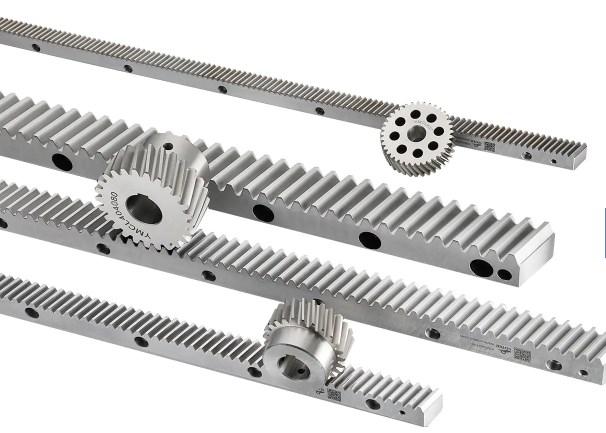The straight gear rack, a fundamental component in various mechanical systems, plays a crucial role in determining the overall performance and efficiency of the gear system. As a linear motion conversion device, the straight gear rack is responsible for converting the rotational motion of gears into linear motion and vice versa. In this article, we will delve into the various factors that influence the performance and efficiency of straight gear racks and how these components can be optimized for better system performance.
Straight gear racks are commonly used in a wide range of industries, including construction, automotive, and manufacturing. They are typically employed in applications where linear motion is required, such as lifting mechanisms, positioning systems, and automated machinery. The primary function of a straight gear rack is to convert the input from a gear, typically in the form of rotational motion, into a linear output. This conversion allows for precise control of the linear motion, which is essential for the efficient operation of various mechanical systems.
The choice of material for a straight gear rack plays a significant role in determining its performance and efficiency. Materials with high strength and stiffness, such as steel or aluminum, are often used in the construction of gear racks. These materials can withstand the forces generated during the conversion of rotational to linear motion, ensuring the durability and longevity of the component. Additionally, the material's wear resistance properties can impact the efficiency of the gear rack, as excessive wear can lead to increased friction and reduced performance.
The design of a straight gear rack, including its tooth profile, pitch, and pressure angle, can significantly influence its performance and efficiency. The tooth profile, which determines the shape of the gear teeth, can be optimized to minimize friction and wear, leading to improved efficiency. The pitch, or the distance between the gear teeth, can also impact the performance of the gear rack. A finer pitch results in smoother motion and reduced vibration, while a coarser pitch may lead to increased noise and wear. The pressure angle, which is the angle between the tooth face and the line of action, can be adjusted to optimize the gear rack's performance under specific load conditions.
The accuracy of the gear rack's manufacturing process can greatly affect its performance and efficiency. Close tolerances in the production of gear racks ensure that the tooth profile, pitch, and other critical dimensions are maintained within acceptable limits. This precision minimizes the potential for errors and inconsistencies in the gear system, leading to improved performance and reduced wear on the components.
Proper lubrication and maintenance of the straight gear rack are essential for maintaining its performance and efficiency. Regular lubrication reduces friction between the gear teeth and other contact surfaces, minimizing wear and extending the component's service life. Additionally, routine maintenance, such as cleaning and inspecting the gear rack for signs of wear or damage, can help identify potential issues before they lead to reduced performance or system failure.
Various factors, including material selection, gear rack design, manufacturing tolerances, and proper lubrication and maintenance influence the performance and efficiency of a straight gear rack. By understanding these factors and optimizing the design and production process, manufacturers can enhance the performance and efficiency of their gear systems, leading to improved reliability and reduced operating costs. As a critical component in numerous mechanical systems, the straight gear rack's impact on overall system performance cannot be overstated, making it essential for engineers and designers to consider these factors when developing new gear systems or upgrading existing ones.
